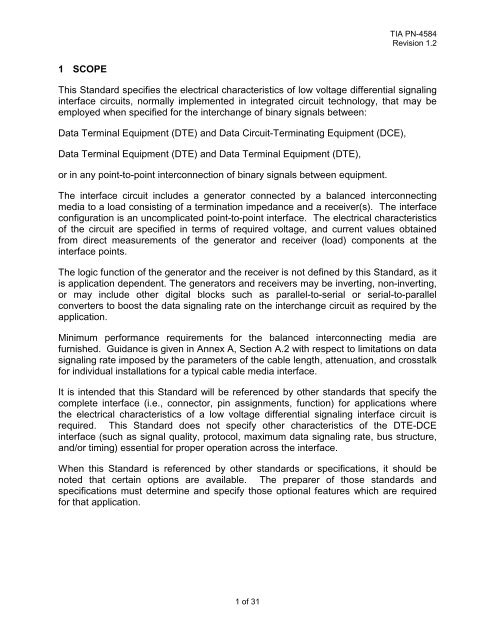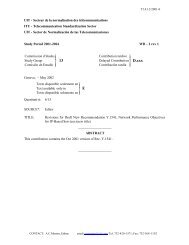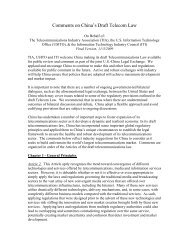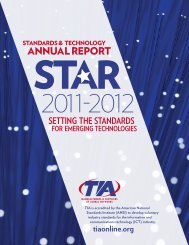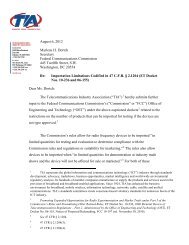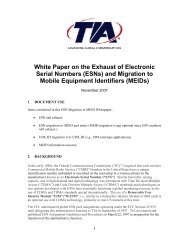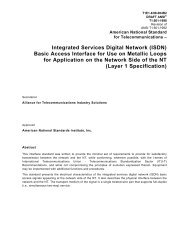ELECTRICAL CHARACTERISTICS OF LOW VOLTAGE ...
ELECTRICAL CHARACTERISTICS OF LOW VOLTAGE ...
ELECTRICAL CHARACTERISTICS OF LOW VOLTAGE ...
Create successful ePaper yourself
Turn your PDF publications into a flip-book with our unique Google optimized e-Paper software.
TIA PN-4584<br />
Revision 1.2<br />
1 SCOPE<br />
This Standard specifies the electrical characteristics of low voltage differential signaling<br />
interface circuits, normally implemented in integrated circuit technology, that may be<br />
employed when specified for the interchange of binary signals between:<br />
Data Terminal Equipment (DTE) and Data Circuit-Terminating Equipment (DCE),<br />
Data Terminal Equipment (DTE) and Data Terminal Equipment (DTE),<br />
or in any point-to-point interconnection of binary signals between equipment.<br />
The interface circuit includes a generator connected by a balanced interconnecting<br />
media to a load consisting of a termination impedance and a receiver(s). The interface<br />
configuration is an uncomplicated point-to-point interface. The electrical characteristics<br />
of the circuit are specified in terms of required voltage, and current values obtained<br />
from direct measurements of the generator and receiver (load) components at the<br />
interface points.<br />
The logic function of the generator and the receiver is not defined by this Standard, as it<br />
is application dependent. The generators and receivers may be inverting, non-inverting,<br />
or may include other digital blocks such as parallel-to-serial or serial-to-parallel<br />
converters to boost the data signaling rate on the interchange circuit as required by the<br />
application.<br />
Minimum performance requirements for the balanced interconnecting media are<br />
furnished. Guidance is given in Annex A, Section A.2 with respect to limitations on data<br />
signaling rate imposed by the parameters of the cable length, attenuation, and crosstalk<br />
for individual installations for a typical cable media interface.<br />
It is intended that this Standard will be referenced by other standards that specify the<br />
complete interface (i.e., connector, pin assignments, function) for applications where<br />
the electrical characteristics of a low voltage differential signaling interface circuit is<br />
required. This Standard does not specify other characteristics of the DTE-DCE<br />
interface (such as signal quality, protocol, maximum data signaling rate, bus structure,<br />
and/or timing) essential for proper operation across the interface.<br />
When this Standard is referenced by other standards or specifications, it should be<br />
noted that certain options are available. The preparer of those standards and<br />
specifications must determine and specify those optional features which are required<br />
for that application.<br />
1 of 31


